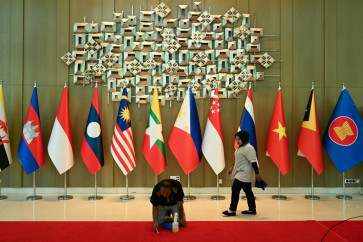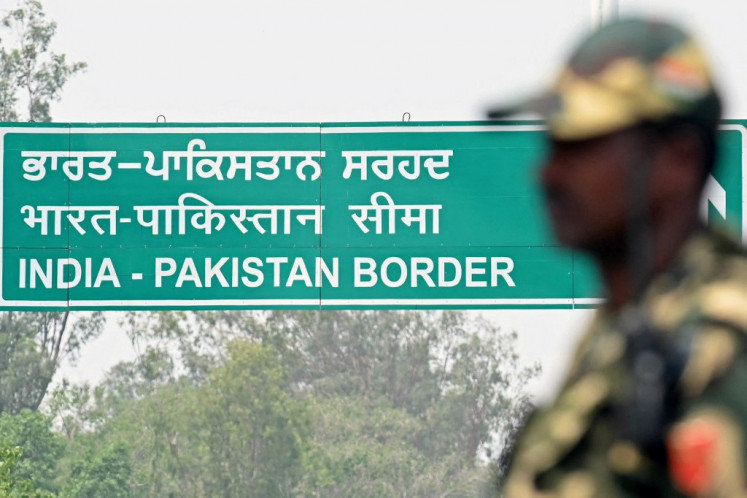ASEAN ministers: Coal technology key to Paris deal success
At last month’s ASEAN energy ministers’ meeting in Manila, representatives from across the region confirmed that coal and, more specifically, high efficiency coal, is the fuel of choice for Southeast Asia
Change text size
Gift Premium Articles
to Anyone

A
t last month’s ASEAN energy ministers’ meeting in Manila, representatives from across the region confirmed that coal and, more specifically, high efficiency coal, is the fuel of choice for Southeast Asia.
Projections forecast coal to increase its share in power generation from 32 percent in 2014 to 50 percent in 2040. During the talks the preference for coal among regional economies was explained by two factors: accessibility and affordability.
Coal is widely available and therefore promotes power supply. In addition to reliability, high efficiency coal is — and will continue to be — the most affordable option to meet electricity demand growth for many economies, while reducing emissions.
Cleaner coal technologies like high efficiency coal reduce or eliminate pollutant emissions, such as CO2, oxides of sulfur, nitrogen and particulate matter.
These technologies allow for uninterrupted electricity: unlike renewables, the technology is not subject to the whims of weather. Nor does it require the development of complex pipeline infrastructure like gas.
Access to this reliable modern energy drives economic growth which promotes opportunity for local populations. China — represented by senior government officials at this meeting — is a remarkable example of the role that affordable coal can play in improving access to energy and supporting economic development.
Over the last three decades, according to the World Bank, 600 million people have been lifted out of poverty and connected to the electricity grid; China has effectively achieved universal access to electricity. The link between access to affordable power from coal, economic growth and prosperity is clear.
Over the next two decades, ASEAN will require 800 terawatt hours (TWh) of additional electricity — comparable to Japan’s total current electricity capacity.
To generate this capacity from renewables alone would mean ASEAN would require up to an additional $500 billion in capital investment — more than 30 times the annual gross domestic product (GDP) of Laos.
In contrast, cleaner coal technologies are considerably more affordable, while also reducing the region’s current emission profile
Developing and emerging economies cannot meet their energy needs, provide energy access, and reduce global emissions without utilizing all energy options and all low emission technologies.
Yet, there remains scope for further progress.
Using the most efficient technology available clearly makes sense and is very much the low-hanging fruit of climate mitigation action.
Recently published research by the World Coal Association (WCA) and the ASEAN Center for Energy (ACE) shows that by upgrading planned coal plants to the latest technologies, members of the ASEAN can reduce their cumulative emissions by 1.3 billion tons in the next 20 years, a reduction equivalent to taking 157 million cars off the road.
This single action alone could accelerate the achievement of global climate objectives without sacrificing economic and social development needs.
Currently, however, there are limited financial and policy support opportunities available to assist the transition to more efficient coal. We, at the World Coal Association, welcome the call made in the Ministerial Statement for greater support from the international community to accelerate the deployment of cleaner coal technologies, particularly by international financial institutions, such as the World Bank.
I am often asked — especially since the Paris Agreement — is it not better to use climate finance to fund renewable technologies?
Given the role coal plays in supporting the deployment of renewables, it’s essential that this coal is used as cleanly as possible.
Hence the importance of investing in low emission coal technologies. Research indicates that the lower generating capacity of renewable technologies means that inevitably, when deployed, they are often complemented by cheaper coal technologies.
High efficiency coal technologies provide the best value for money in global climate financing. Data indicates that investing in cleaner coal technology in Southeast Asia reduces more CO2 than renewable investment in Western Europe.
Coal has always been a critical enabler of development in the modern world — this role will continue over coming decades. It is only logical then that the rapidly industrializing and urbanizing economies of Southeast Asia that are choosing to use coal do so with the lowest emissions profile.
So as the international community looks to achieve the Paris Agreement goals, we must recognize that many countries will use coal to meet their growing energy needs and many countries have therefore included a role for cleaner coal technologies in their Paris Agreement plans.
The WCA is committed to supporting the deployment of high efficiency coal technologies and stand ready to work with key stakeholders, both in Asia and internationally. We would like to see more international financial support for countries to accelerate the deployment of cleaner coal technologies.
____________________________
The writer is chief executive of the World Coal Association.









